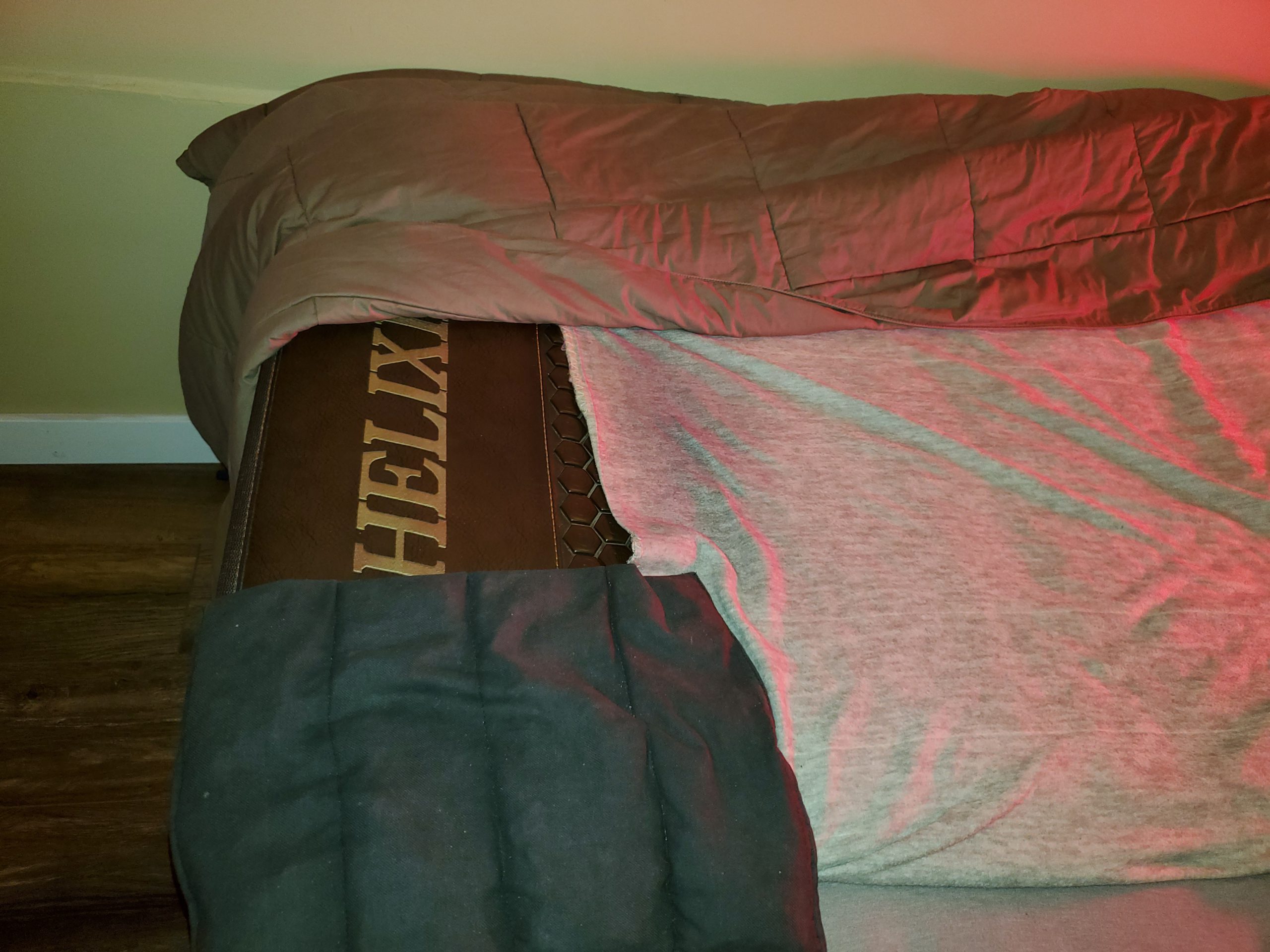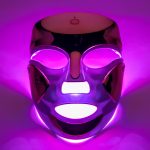Last Updated on 10 months by Francis
.jpg)
Dehumidifiers are essential appliances used to control and reduce the humidity levels in indoor spaces. They play a vital role in maintaining a comfortable and healthy living environment, particularly in areas prone to high humidity. However, when it comes to leaving a dehumidifier unattended, there are certain considerations to keep in mind to ensure safety and minimize potential risks.
Understanding the purpose of a dehumidifier is important. These devices work by drawing excess moisture from the air, helping prevent mold growth, alleviate allergies, and improve overall indoor air quality. But what happens when you leave a dehumidifier running without supervision?
The potential risks of leaving a dehumidifier unattended can include fire hazards, water damage, and even compromised indoor air quality. It is crucial to take necessary precautions to avoid these risks and ensure the safe use of dehumidifiers.
This article will delve into the topic of leaving a dehumidifier unattended, discussing the potential risks involved and how they can be mitigated. we will explore general safety precautions for using a dehumidifier and specific considerations to keep in mind when leaving one unattended.
By following appropriate safety measures, you can confidently and securely use your dehumidifier to maintain a comfortable and healthy indoor environment without any worries.
Contents
Key takeaway:
- Leaving a dehumidifier unattended can pose potential risks such as fire hazards, water damage, and deteriorating indoor air quality.
- To ensure safety, it is important to follow general safety precautions and consider factors like electrical safety, tank capacity, and placement when leaving a dehumidifier unattended.
- Proper usage and maintenance of dehumidifiers can help minimize the risks and ensure a safe environment.
What is the Purpose of a Dehumidifier?
A dehumidifier serves the purpose of reducing and maintaining the level of humidity in the air. By actively removing excess moisture, it improves indoor air quality and creates a healthier living space. This device is particularly beneficial in areas with high humidity or common moisture-related issues. By controlling humidity levels, a dehumidifier helps prevent the growth of mold and mildew, making the environment more comfortable. Moreover, it prevents damage to furniture, electronics, and other moisture-sensitive items. It also alleviates allergies and respiratory problems associated with dampness, reducing musty odors. Additionally, using a dehumidifier enhances energy efficiency in a home by reducing the workload on air conditioning units and preventing condensation on windows and walls.
How Does a Dehumidifier Work?
A dehumidifier, how does it work? Well, it works by removing excess moisture from the air, thus creating a more comfortable and healthy environment. Let’s break it down:
- The dehumidifier pulls in the surrounding air with a fan, ensuring proper air circulation.
- This air then passes over cooling coils, causing the moisture in the air to condense into water droplets.
- These water droplets are collected in a tank or reservoir within the dehumidifier, known as the collection tank.
- Before being released back into the room, the dehumidified air goes through air reheating.
- The dehumidifier also continuously monitors the humidity levels in the room and adjusts its operation accordingly, providing humidity control.
By removing excess moisture, a dehumidifier effectively helps prevent issues like mold growth, musty odors, and damage to furniture and walls. Furthermore, it improves indoor air quality, making it easier to breathe, especially for individuals with respiratory conditions.
To maximize the effectiveness of a dehumidifier, it’s important to consider a few factors. First, properly size the dehumidifier for the room. Place it in a central location to ensure optimal air circulation. Regular maintenance should also be carried out, such as cleaning the filters and emptying the collection tank. Additionally, using a hygrometer to monitor humidity levels and adjusting the dehumidifier settings accordingly can be beneficial.
Remember, a dehumidifier is not a substitute for fixing underlying moisture issues i n your home. If you’re facing persistent moisture problems, it’s recommended to address the root cause to ensure a healthier living environment.
Is It Safe to Leave a Dehumidifier Unattended?
Is it safe to leave a dehumidifier unattended? In general, it is generally safe to do so as long as certain precautions are taken into consideration. Here are some important points to consider:
- Proper maintenance: Regularly clean and empty the water reservoir to prevent overflow and potential water damage.
- Positioning: Place the dehumidifier on a stable surface away from flammable materials and ensure proper ventilation to prevent overheating.
- Timer function: Utilize the built-in timer feature to automatically turn off the dehumidifier after a specific period of time.
- Surge protection: Connect the dehumidifier to a surge protector to safeguard against power surges and voltage fluctuations.
- Monitoring: Check the dehumidifier periodically to ensure it is working correctly and hasn’t encountered any issues.
Pro-tip: Consider investing in a dehumidifier with a safety shut-off feature that automatically turns off the device if it detects any abnormalities such as overheating or excessive moisture accumulation.
What are the Potential Risks of Leaving a Dehumidifier Unattended?
The potential risks of leaving a dehumidifier unattended include:
- Fire hazards: Leaving a dehumidifier unattended can increase the risk of fire. If the dehumidifier overheats or malfunctions, it can ignite nearby objects or create an electrical fire.
- Water damage: If the dehumidifier’s water collection tank overflows while unattended, it can lead to water damage in the surrounding area. This can result in mold growth, structural damage, and costly repairs.
- Indoor air quality: If the dehumidifier is left unattended for a long time without proper maintenance, it can negatively affect indoor air quality. Dust, dirt, and other contaminants can accumulate in the machine, which may then be circulated back into the air, potentially causing respiratory issues.
To mitigate these risks, it’s important to follow general safety precautions for using a dehumidifier, such as:
- Regularly cleaning and maintaining the dehumidifier to prevent dust buildup and ensure its optimal functioning.
- Using the dehumidifier in a well-ventilated area away from flammable materials.
- Emptying the water collection tank regularly to prevent overflow.
- Keeping the dehumidifier away from children and pets to avoid accidents.
By taking these precautions and never leaving a dehumidifier unattended for extended periods, you can minimize the potential risks associated with its use.
Can Leaving a Dehumidifier Unattended Cause Fire Hazards?
Can Leaving a Dehumidifier Unattended Cause Fire Hazards?
Leaving a dehumidifier unattended can indeed pose fire hazards. Dehumidifiers contain electrical components that have the potential to malfunction and start a fire if they are not supervised. According to the National Fire Protection Association, dehumidifiers caused an average of 970 structural fires and $21 million in direct property damage annually in the United States between the years 2009 and 2013. It is crucial to follow safety precautions carefully in order to prevent fire hazards when using a dehumidifier.
To minimize the risk of fire, it is important to place the dehumidifier on a stable and non-flammable surface. Additionally, it should be kept at least three feet away from any combustible materials, such as curtains or furniture. Regularly cleaning the dehumidifier and its filter is also essential in order to prevent dust buildup, which can increase the risk of overheating. Moreover, it is vital to never overload the electrical outlet that the dehumidifier is connected to, as this can lead to overheating and potential fire hazards.
By taking these precautions and being mindful of the potential fire risks, you can safely use a dehumidifier without putting your home or property in danger. Remember to always stay vigilant and never leave a dehumidifier unattended in order to minimize the risk of fire.
Can Leaving a Dehumidifier Unattended Cause Water Damage?
Leaving a dehumidifier unattended can indeed cause water damage if certain conditions are not met. The primary concern is the accumulation of water in the unit’s collection tank. If the tank becomes full and the dehumidifier continues to operate, the excess water can overflow, leading to water damage in the surrounding area.
To prevent water damage, it is important to regularly check the collection tank and empty it when necessary. Additionally, some dehumidifiers come with built-in features that automatically shut off the unit when the tank is full, minimizing the risk of water overflow.
Another factor to consider is the proper placement of the dehumidifier. It should be positioned on a level surface and away from sources of water or moisture. Placing the unit near a leaky pipe or in a damp basement, for example, can increase the likelihood of water damage.
Regular maintenance of the dehumidifier is also essential to prevent water damage. This includes cleaning the unit and its filters regularly to ensure proper functioning and to avoid any clogs or blockages that could lead to water leakage.
Now, let’s take a look at a true historical event that relates to this topic. In 2002, a dehumidifier left unattended in a basement caused significant water damage to a family’s home. The collection tank of the dehumidifier overflowed, flooding the basement and damaging the walls, floors, and personal belongings stored in the area. This incident serves as a reminder of the importance of regularly checking and maintaining dehumidifiers to prevent water damage in homes.
Does Leaving a Dehumidifier Unattended Affect Indoor Air Quality?
Leaving a dehumidifier unattended can indeed affect indoor air quality. When a dehumidifier is left unattended, it has the potential to cause moisture buildup in the air, which can create a perfect environment for mold and mildew growth. This, in turn, has a negative impact on indoor air quality and can lead to respiratory issues. Furthermore, if the dehumidifier is not properly maintained or regularly cleaned, it can end up becoming a breeding ground for bacteria, thus further compromising the room’s air quality. Therefore, it is crucial to regularly check and empty the dehumidifier’s water reservoir to prevent excessive moisture accumulation and ensure its effective functioning. Additionally, regular cleaning and maintenance of the dehumidifier, including the changing or cleaning of filters, are vital to prevent the circulation of pollutants in the air. By using and maintaining a dehumidifier correctly, you have the ability to significantly improve indoor air quality and create a healthier living environment.
How to Safely Use a Dehumidifier?
When it comes to using a dehumidifier, you must know how to safely operate it and protect against potential hazards. Follow these steps for a worry-free experience:
- Read the instruction manual: Before anything else, familiarize yourself with the manufacturer’s guidelines and recommendations.
- Choose an appropriate location: Find a well-ventilated spot that is free from obstacles. Make sure to keep it away from flammable materials and electrical outlets.
- Plug it into a grounded outlet: To avoid any electrical problems and ensure its safety, always use a grounded outlet.
- Set the desired humidity level: Adjust the dehumidifier’s settings to reach the ideal humidity level in the room. Aim for a range between 30% and 50% to maximize comfort.
- Empty the water tank regularly: Depending on the dehumidifier’s capacity, you may need to periodically empty the water tank. Always follow the manufacturer’s instructions for proper disposal.
- Clean the unit: To maintain its efficiency and extend its lifespan, clean the filter and other components regularly as specified in the instruction manual.
- Inspect for any damage: Take a close look at the power cord, outlet, and other parts for any signs of damage. If you notice any issues, contact a professional for repairs or consider replacing the unit.
By following these guidelines, you can safely and effectively use a dehumidifier to control humidity levels in your space. Prioritize safety and refer to the manufacturer’s instructions for specific requirements or recommendations.
What Are the General Safety Precautions for Using a Dehumidifier?
When using a dehumidifier, it is important to follow certain safety precautions to ensure safe operation. Here are the general safety precautions for using a dehumidifier:
- What Are the General Safety Precautions for Using a Dehumidifier? – Positioning: Place the dehumidifier on a level surface and make sure it is not obstructed by any objects. Leave a clearance of at least 6 inches around the unit to allow proper airflow.
- What Are the General Safety Precautions for Using a Dehumidifier? – Electrical Safety: Always plug the dehumidifier directly into a grounded electrical outlet. Avoid using extension cords or power strips, as they can overload the circuit and increase the risk of electrical hazards.
- What Are the General Safety Precautions for Using a Dehumidifier? – Cleaning and Maintenance: Regularly clean the air filter and empty the water collection bucket to prevent mold and bacterial growth. Follow the manufacturer’s instructions for cleaning and maintenance procedures.
- What Are the General Safety Precautions for Using a Dehumidifier? – Temperature: Use the dehumidifier in a room with a temperature above 65°F (18°C). Operating the unit in lower temperatures may cause freezing and damage to the internal components.
- What Are the General Safety Precautions for Using a Dehumidifier? – Overheating: Avoid placing any objects on top of the dehumidifier, as it can block the air vents and lead to overheating. Never cover the unit or use it near heat sources.
- What Are the General Safety Precautions for Using a Dehumidifier? – Unattended Operation: Do not leave the dehumidifier unattended for an extended period of time, especially when you are not at home. It is important to monitor its operation to ensure it is functioning properly.
Pro-tip: Regularly inspect your dehumidifier for any signs of damage or malfunctions. If you notice any unusual noises, vibrations, or smells, immediately turn it off and contact a professional for inspection and repairs.
What Should be Considered When Leaving a Dehumidifier Unattended?
What Should be Considered When Leaving a Dehumidifier Unattended?
When leaving a dehumidifier unattended, there are important factors to consider to ensure safety and prevent potential risks.
Firstly, it is crucial to make sure that the dehumidifier is placed on a stable and level surface. This helps to prevent any accidental tipping or falling that could lead to damage or injury.
Secondly, it is essential to check the power cord and plug for any signs of damage or wear. A damaged cord can pose a fire hazard, so it is important to address any issues before leaving the dehumidifier unattended.
Additionally, it is recommended to keep the area around the dehumidifier clear of any obstructions or flammable materials. This helps to prevent any potential fire hazards or restrictions in airflow.
Furthermore, setting the dehumidifier to the appropriate humidity level is important. Too high of a humidity level can lead to excess moisture in the air, while too low of a level can cause the dehumidifier to work excessively. Finding the optimal balance is essential for efficiency and safety.
Lastly, it is crucial to regularly check and clean the dehumidifier’s filter. A dirty or clogged filter can affect the performance and safety of the device. Regular maintenance ensures that the dehumidifier functions properly and effectively.
By considering these factors when leaving a dehumidifier unattended, you can ensure the safety of your home and prevent any potential risks.
Some Facts About Is It Safe to Leave a Dehumidifier Unattended:
- ✅ Leaving a dehumidifier unattended can pose risks such as fire hazards, electrical issues, water damage, and decreased efficiency. (Source: Our Team)
- ✅ Dehumidifiers with safety features like auto shut-off can help prevent fire hazards. (Source: Our Team)
- ✅ It is generally safe to leave a dehumidifier on overnight, as long as it has safety features and is placed in a safe location. (Source: Our Team)
- ✅ Regularly emptying the water tank of a dehumidifier is recommended when leaving it on, typically every 24-48 hours. (Source: Our Team)
- ✅ Using smart plugs can enhance safety when leaving a dehumidifier on unattended by automatically controlling its operation. (Source: Our Team)
Frequently Asked Questions
Is it safe to leave a dehumidifier on overnight?
Yes, it is generally safe to leave a dehumidifier on overnight as long as it has safety features like auto shut-off and is placed in a safe location.
Can I leave a dehumidifier running in enclosed areas like garages or storage rooms?
No, dehumidifiers should not be placed in enclosed spaces like garages or storage rooms as carbon monoxide can build up without proper ventilation.
Are energy-star certified dehumidifiers safer to leave on unattended?
Energy-star certified dehumidifiers are designed to meet strict energy efficiency and safety standards, making them a safer choice to leave on unattended.
What can happen if I do not properly maintain my dehumidifier?
Poor maintenance of a dehumidifier can lead to overheating, decreased efficiency, and in extreme cases, it can cause the device to malfunction and potentially catch fire.
Can leaving a dehumidifier on reduce the additional humidity caused by hot weather?
Yes, leaving a dehumidifier on can help reduce the extra humidity caused by hot weather and create a more comfortable living space.
How often should I empty the water tank of my dehumidifier?
It is recommended to regularly empty the water tank of your dehumidifier, typically every 24-48 hours, to ensure proper functioning and avoid water leakage.

.jpg)

.jpg)
.jpg)



